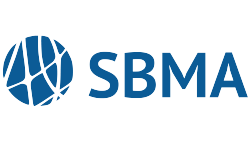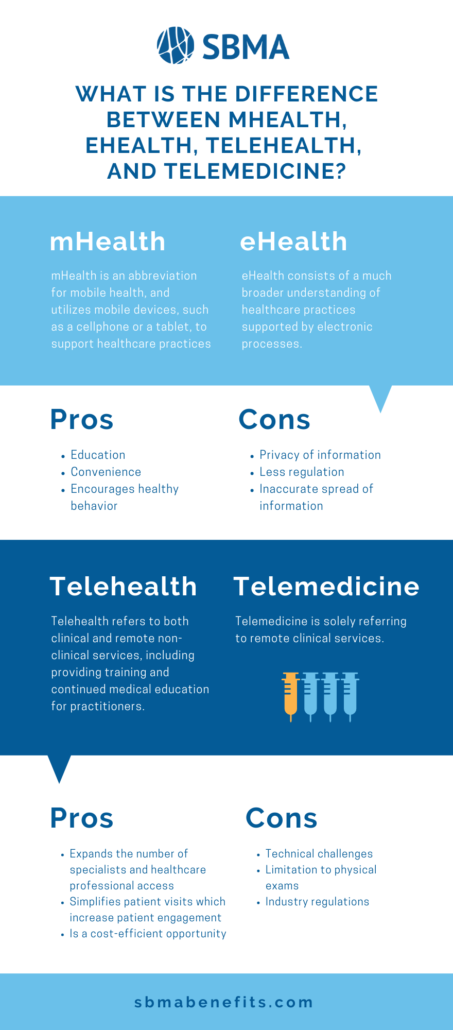Pros and Cons of mHealth and eHealth
Like everything else, there are pros and cons to using the digital capabilities of mHealth and eHealth.
Pros of mHealth and eHealth
- Education
- Convenience
- Encourages healthy behavior
These three elements make mHealth and eHealth valuable tools for users. It’s a form of education for users to understand medical terminology easily, learn more about anatomy, prescription medication, and provide the ability to research using medical literature.
We live in a world of convenience. Having technology on easily accessible smartphones keeps information at the tip of a finger, wherever users are. mHealth and eHealth can provide reminders about appointments or medications and much more by streamlining the communication processes. Healthcare providers have easier digital access to records and information instead of relying on paper documents.
Finally, these digital services act as a platform to encourage healthy behavior through reminders or even encouragement from doctors.
Cons of mHealth and eHealth
- Privacy of information
- Less regulation
- Inaccurate spread of information
Like all digital information, the material presented in apps is susceptible to data breaches and hackers. There is also the potential that an app could share personal and private user information.
Additionally, these apps contain information that is less regulated than the information published in medical journals. For example, using them to test blood pressure may lead to inaccurate results.
Consider the pros and cons when using digital tools to support healthcare practices.
THE DIFFERENCE BETWEEN TELEHEALTH AND TELEMEDICINE
These terms are also confused with one another and used interchangeably. However, like eHealth and mHealth, one term serves a broader purpose. The broader term in this comparison is telehealth. Telehealth refers to both clinical and remote non-clinical services, including providing training and continued medical education for practitioners.
Telemedicine solely refers to remote clinical services. The concept of telemedicine was started to treat patients who are located in remote areas.
Throughout the last year with more and more services relying more on virtual resources, it has served a greater purpose – providing people access to care without putting themselves at risk of contracting COVID-19. As more people gain access to these services, expectations around waiting room times, access to care, and convenience of care are changing.
Understanding the ways the terms work together to create the big picture of virtual healthcare is crucial to understanding your access to care. The aim of all of these services is to provide greater quality, efficiency, and cost of care to both practitioners and patients. Each plays a unique role in crafting a well-rounded digital healthcare plan for patients.
Pros and Cons of Telehealth and Telemedicine
Like mHealth and eHealth, the usage of telehealth and telemedicine can have positive and negative effects. Let’s uncover what they are.
Pros of Telehealth and Telemedicine
- Expands the number of specialists and healthcare professional access
- Simplifies patient visits which increases patient engagement
- Is cost-efficient
Technological expansion now allows patients access to a wider net of specialists and healthcare professionals. Traveling to a provider is of no concern with video capabilities. This helps patients who live in a different location see a wider range of healthcare professionals, or help patients see a provider for visits that do not require in-person exams.
Patient engagement is crucial for the success of their treatment plan. Telehealth and telemedicine services give patients quick access to providers and supporting staff in case treatment plans need alteration. It also helps practitioners check in with patients conveniently and encourages the continuation of care plans.
Overall, telehealth and telemedicine services are more cost-effective for patients and healthcare professionals. It saves time traveling and time in the waiting room. Additionally, virtual payment methods are quick, easy, and reduce paper billing processes.
- Technical challenges
- Limitation to physical exams
- Industry regulations
On the flip side, technology itself poses challenges. Hardware, software, and wireless connection aren’t foolproof. They can malfunction without notice or in the middle of a virtual exam. Some users may even find switching to technology a more difficult barrier to overcome.
While video conferencing an appointment with a healthcare provider works for certain visits, they may not in all instances. There are times when seeing a provider in person will help find the answers needed for a treatment plan.
Each state has different rules and regulations when it comes to telehealth and telemedicine practices. Again, as we rely more heavily on technology, there are rising concerns regarding how safe and protected information is from hackers and data breaches.
Overall, telemedicine and telehealth have pros and cons, similar to mHealth and eHealth. Weighing the benefits and the drawbacks of both help make better, well-informed decisions.
At SBMA, we believe in providing our clients with the most affordable, efficient benefits that are tailored to the needs of their employees. Telemedicine services integrate seamlessly into your benefits package to ensure your employees remain healthy and happy.
Read on to learn more about telehealth and why it’s here to stay.
For more information, check out our guide to the pros and cons of telemedicine, here.



